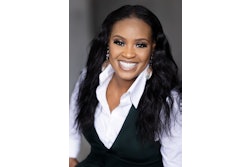Established as a school for American Indians, the University of North Carolina at Pembroke has become the most diverse institution among master’s-granting universities in the state.
At the University of North Carolina at Pembroke, the university’s past is as important as its future. Founded in the late 1800s to educate the Croatan Indians (later renamed Lumbee) in North Carolina, the university seems to attract many of the state’s students of color looking to pursue higher education. UNCP, one of 16 schools that make up the University of North Carolina system, is a master’s level university serving more than 6,000 students, nearly 50 percent of whom are minorities.
“Our commitment to diversity is not just rhetoric,” says Dr. Charles F. Harrington, provost and vice chancellor for academic affairs. “You can see it on our campus, in our students, in our faculty, in our curriculum and in our staff.”
Students of color flock to UNCP for the high-quality education they stand to receive at a fraction of the cost, Harrington says. “It’s about access and affordability. Our tuition and fees are among the lowest in the state,” he says.
According to UNCP officials, the minimum cost for a full-time, in-state undergraduate living on campus, with a meal plan, is $9,574 a year, significantly less than the $15,000 in tuition and fees at the University of North Carolina at Chapel Hill, the state’s flagship school.
The First of Its Kind
During the 1830s, North Carolina banned education for all people of color. “For 50 years, my people couldn’t educate themselves. We rose several generations, and people watched their society become less and less educated … a very humbling thing,” says Alex Baker, spokesman for the Lumbee tribe of North Carolina. “Finally we won the right to have a school. There is a lot of pride when it comes to UNCP.”
In 1887, the General Assembly of North Carolina created the Croatan Normal School in response to a petition from the American Indian people of the area. The school, which offered elementary and secondary coursework, opened with 15 students. More than 30 years later, the board of trustees added a two-year program beyond high school, and phased out elementary instruction.
In recognition of its new status, the General Assembly changed the name of the school to Pembroke State College for Indians. It was the only state-supported fouryear college for American Indians in the nation until 1953.
During the early 1950s, the board of trustees approved the admission of White students, to 40 percent of the total enrollment. Following the Supreme Court’s school desegregation decision in 1954, UNCP opened its doors to all qualified applicants regardless of race. Growth of more than 500 percent followed during the next eight years. In 1972, the General Assembly established the 16-campus University of North Carolina, with Pembroke State University as one of the constituent institutions.
During an era when the loss of land, possessions or even the sentiment of progress infringed on the American Indian way of life, the transition of Pembroke State College for Indians from an American Indian-serving institution to a regional university came with little protest.
“UNCP has a special place in the heart of the Lumbee tribe,” says Baker. “Desegregation [in Pembroke] was just like any other community in the South. That discussion was sometimes a heated and intense one, but for the most part the transition was relatively smooth.”
UNCP boasts an American Indian studies program, a Museum of the Native American Resource Center, and the university participates in traditional cultural celebrations such as Pembroke Day. “The Native American tradition at UNCP is very strong and is evident in its housing one of the very few American Indian studies programs in the country. The original mission may have changed as the university has diversified, but it is still dedicated to the promotion of Native American cultures and education,” says Dr. Michael Spivey, professor of sociology at Pembroke.
Despite the university’s visible commitment to diversity, its graduation rates are not as impressive. The university’s six-year graduation rate in 2006 was 37.6 percent overall, 44.2 percent for Blacks, 37.1 percent for Whites and 36.6 percent for American Indians, according to the Education Trust.
A Rising Concern
At UNCP, Black students outnumber American Indian students by nearly 10 percent. This has caused concern among some members of the American Indian population.
“UNCP is the home of the Lumbee Indians. It was founded on the premise to educate American Indians in this area. It’s not an HBCU, it’s a historically American Indian institution. The numbers don’t reflect that,” says Robert Canida, the director of the office of multicultural and minority affairs.
As for the number of Black students, Canida says, “We’re not doing anything special to get those students here, yet the numbers keep increasing. Our real diversity is purely numerical. We could be doing more in the area of diversity education and inclusion.”
Black students make up 26 percent of UNCP’s entire population followed by American Indians at 18 percent, Hispanics at 3 percent and Asians at 2 percent. In Robeson County, Blacks account for 24.6 percent of residents and American Indians 37.5 percent, according to the U.S. Census 2006 population estimate.
While American Indians appear to be underrepresented at UNCP in relation to their representation in the community, Baker says the Lumbee tribe is more concerned about improving the pipeline of American Indians who can go to college. The tribe is currently investing its resources, along with those of UNCP, into a larger issue — low high school graduation rates. Nearly 34 percent of American Indians in North Carolina do not have a high school diploma, according to the 2006 American Community Survey of the U.S. Census Bureau.
“The proportion of American Indian students that graduate from high school is far below the averages of other minority students. The number of those students that matriculate into a two-year or fouryear program is really quite small,” says UNCP’s Harrington, noting that Pembroke enrolls 80 percent of American Indians who go on to four-year schools.
A Holistic Focus
Walking into the Pembroke cafeteria is like joining the model United Nations, says Harrington. “You’ll see students of every color sitting at one table immersed in provocative conversation,” he says. Instead of conflict, “students see the face of the work force that they are going to enter.”
James Hampton, a 44-year-old sophomore at UNCP who is Black, opted out of attending one of North Carolina’s historically Black colleges or universities; he chose UNCP instead.
“UNCP was one of the best decisions I ever made,” says Hampton, who is working toward his bachelor’s degree in information technology management. “We can’t all go to HBCUs. There have always been others that went somewhere else. UNCP is very diverse. I liked the program so I decided to apply.”
A native of Brooklyn, N.Y., Hampton gravitates toward environments where he can find a good mix of people. As far as inclusion at UNCP is concerned, Hampton says, “It is here as it is everywhere: racism, double standards, and different expectations for [varying groups]. I would be lying if I said it didn’t [happen]. But there are many situations and events where people from every background all come together.”
UNCP prides itself on focusing on the “whole student,” Harrington says. None of its courses are taught by teacher’s assistants or graduate assistants, and, with a student-faculty ratio of 14 to 1, the average class size hovers at 30 students.
“Our professors provide great personal relationships, and the university allows students to engage in the region,”Harrington says.
Hampton agrees. “I can truly say my mentors — of all colors — have opened doors.”
Click here to post and read comments
© Copyright 2005 by DiverseEducation.com















